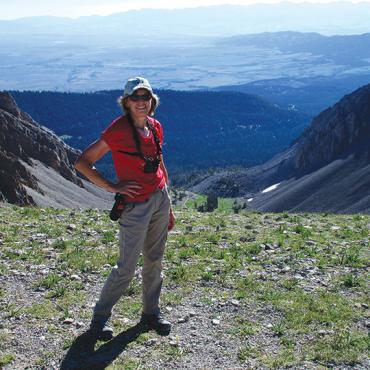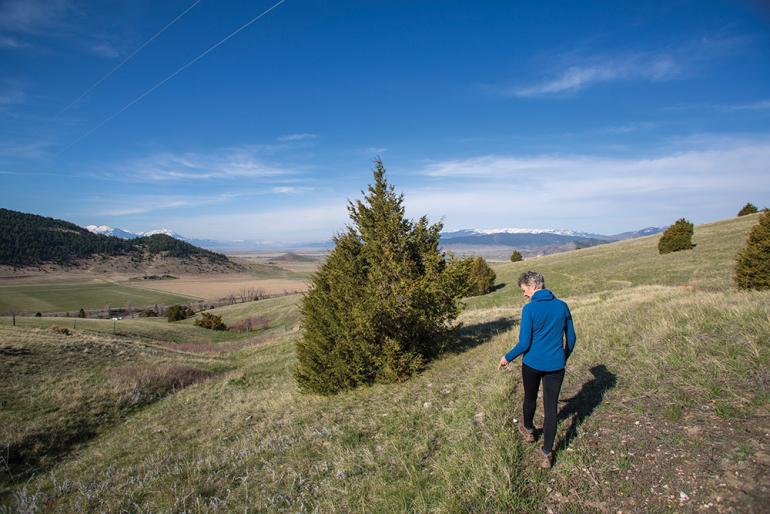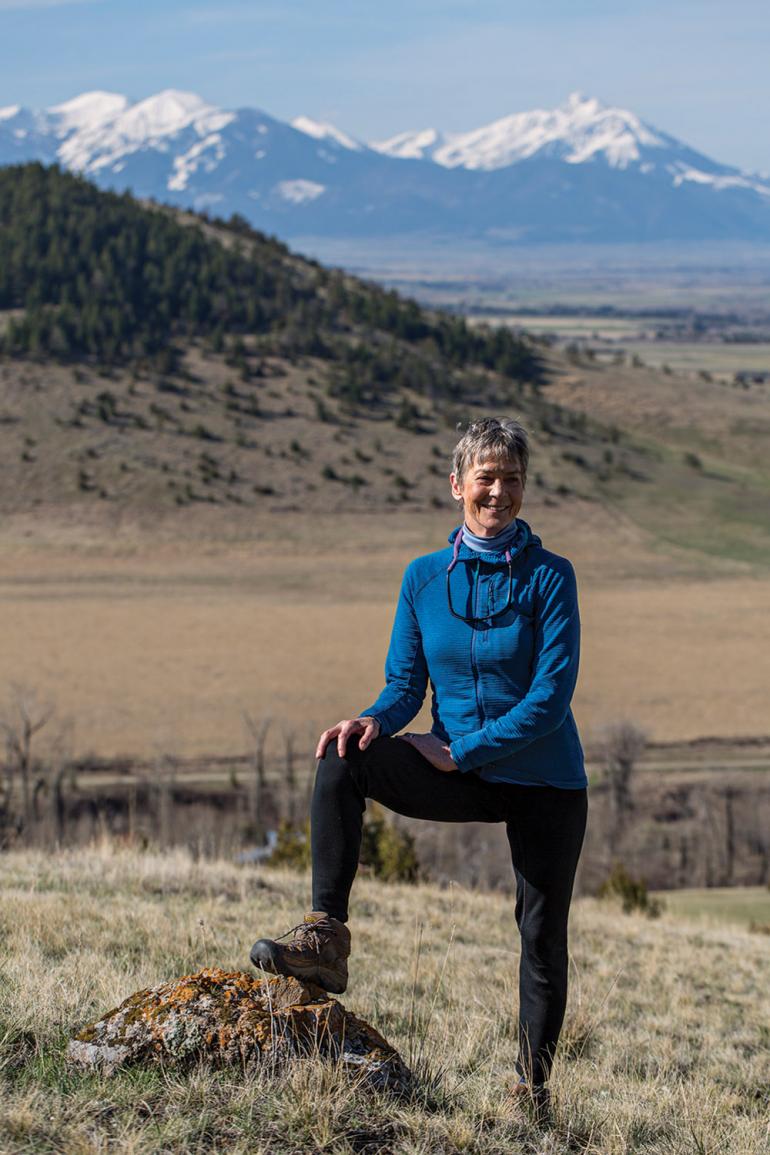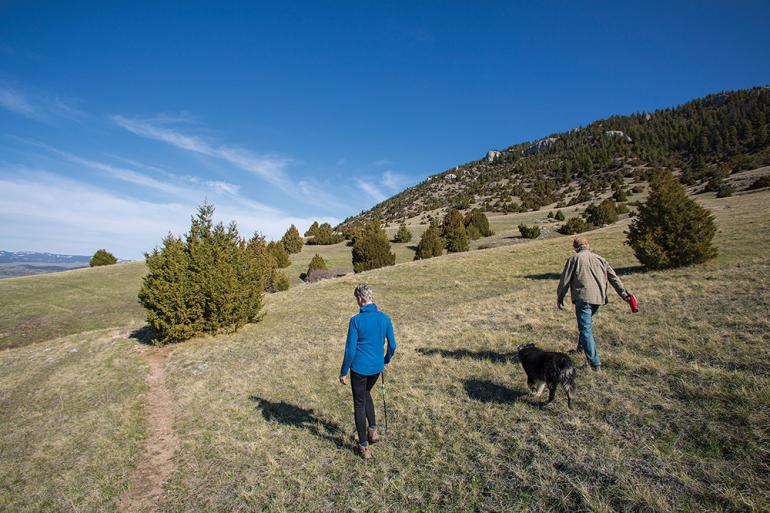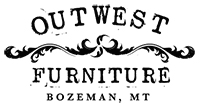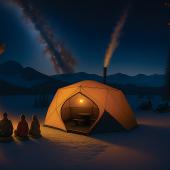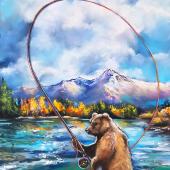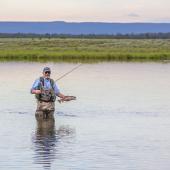Active Retirement
The tireless efforts of Louisa Willcox.
On a Saturday morning seven years ago, I joined a meditation group in Livingston. After everyone introduced themselves, we “sat” for 30 minutes, then spent another hour discussing Buddhist teachings emphasizing, among other things, wisdom and awareness. The woman next to me quietly introduced herself as Louisa. Later, as we milled in the hallway and I became acquainted with my fellow wisdom-seekers, the woman seemed surprised that I recognized her as Louisa Willcox, a familiar name in the world of wildlife and conservation.
In the years since, I’ve come to know Louisa fairly well, despite the fact that this stoic, sensitive, 120-pound dynamo would rather talk about anything except herself.
She’ll humbly admit to a 40-year career spent advocating tirelessly for grizzlies and wilderness, working for “institutions” like Natural Resources Defense Council, Sierra Club, Center for Biological Diversity, and Greater Yellowstone Coalition. She probably won’t, however, mention her lifetime-achievement award from her alma mater, the Yale School of Forestry and Environmental Studies.
Besides, she’s “retired” now.
No more strategizing to keep grizzlies on the Endangered Species List and off of the walls of trophy hunters, or arguing that the current isolated grizzly populations are still too small and imperiled to be considered stable. Unless you count co-writing (with her husband, Dr. David Mattson) the blog Grizzly Times, doing podcasts, and presenting the occasional webinar like the one they did in December 2021, entitled, “Will 399 Survive? The World’s Most Famous Grizzly Bear in Peril.”
Since declaring “retirement,” Louisa, David, and their 13-year-old Australian shepherd Tashi spend more time exploring the open meadows above their home in Paradise Valley. If you’re an early riser drawn to hiking the Absaroka hillsides, you might find yourself sharing the landscape with them. Louisa and Tashi may be quietly searching for griz sign, like freshly dug biscuitroot, horsetail, sedges, or dandelion. David may be prone in the vegetation, camera in hand, carefully adjusting a petal here, or a leaf there, setting up one of his brilliant close-ups of hardy wildflowers with delicate names like spring beauty, glacier lily, and fairy slipper.
Never one to allow grasses and sedges to grow under her feet, however, Louisa is also working on a book… in her spare time, since she’s “retired.”
New Beginnings in the New World District: The Triumph of Perseverance is “a photographic celebration” of a hard-fought conservation victory in which Louisa played a part.
In 1993, a Canadian corporate giant proposed a massive gold mine, the planned location of which happened to be on the doorstep of Yellowstone National Park. The idea of the New World Mine horrified hikers and hunters, artists and anglers alike. They furiously fought and strategized together for over seven years to save trout streams, a wetland, and wildlife from wanton destruction. Louisa’s green eyes light up at the telling of how a group of “inspired rabble-rousers” miraculously stopped the potential environmental horror.
And “it wasn’t just rabble-rousers who opposed this mine,” Louisa explains. “The coalition included ranchers, sportsmen, conservative county commissioners and congressmen, and CEOs of big corporations who typically shied away from conflict. This coalition of unlikely bedfellows created a magic that, in turn, produced an unstoppable force.”
“At the time, I was the first program director of Greater Yellowstone Coalition,” she continues. “I was working to protect the ecosystem, then suddenly this damn mine proposal showed up. I felt like I was spinning a lot of plates: we were up against something that felt even dangerous at times. We had no idea whether or not we could actually win this David-and-Goliath fight.”
The furor was such that president Bill Clinton finally intervened, helping negotiate a deal which put the skids on the mine’s would-be 70-mile-long transmission line and 80 acres of mining waste.
She describes her book as a “love letter to the Beartooths and Yellowstone, and to the people who successfully fought the New World Mine against all odds.” In the summer of 2021, Louisa helped organize a 25-year anniversary celebration of this Triumph of Perseverance. She has time for party planning now. She’s “retired.”
Louisa’s green eyes light up at the telling of how a group of “inspired rabble-rousers” miraculously stopped the potential environmental horror.
Louisa’s initial motivation for exploring Buddhism and meditation back in 1996 included resolving “anger and pain over the harm being inflicted on the Earth and the pettiness and short-sightedness of some people working to promote environmental protection.” Almost 30 years later, her meditation practice gives her tools to better deal with Montana’s current “regressive and counterproductive policies” toward wolves and grizzlies; policies she describes as “toxic, motivating people by using fear tactics,” adding that, “grizzly bears and wolves are no longer real animals, but rather, abstract symbols in a culture war.”
Grizzly Times encourages readers to “take action” against state wildlife agencies increasingly ordered toward “harvestable surplus,” ignoring the majority of Montanans who prioritize preserving wildlife and ecosystems.
Grizzly Times’ new essay series includes Louisa’s piece titled “Warriors for Whitebark Pine: Fighting for an Imperiled Forest.” The piece describes how, reminiscent of the rabble-rousers who rallied to stop the New World Mine, a “rag-tag army” strategized to save a tree back in 2008. A “little appreciated tree” with which Louisa admits to having a “long-time love affair.”
Louisa has more time to indulge in that high-altitude romance now. She’s “retired.”
To read Louisa’s work, go to grizzlytimes.org.


